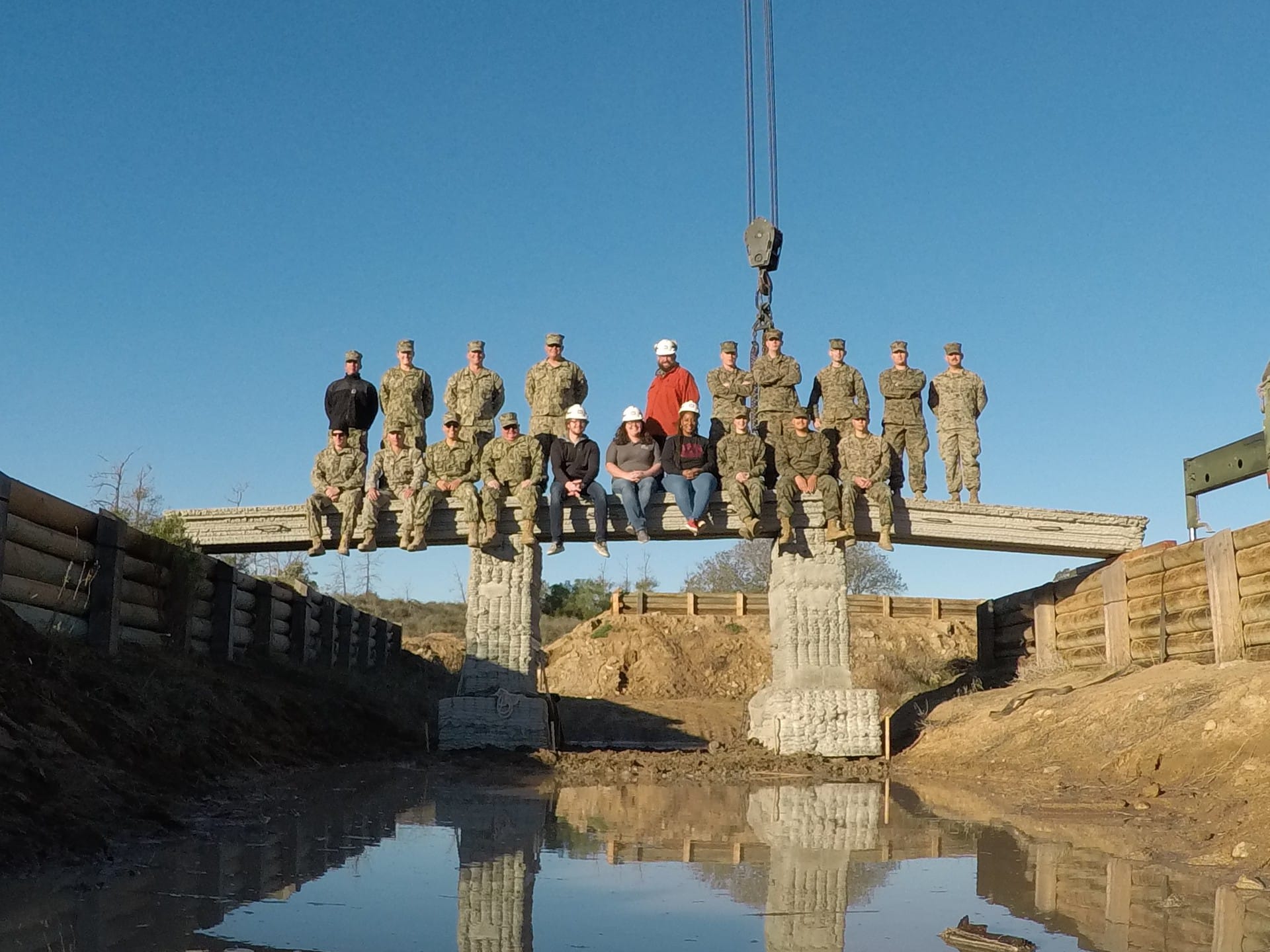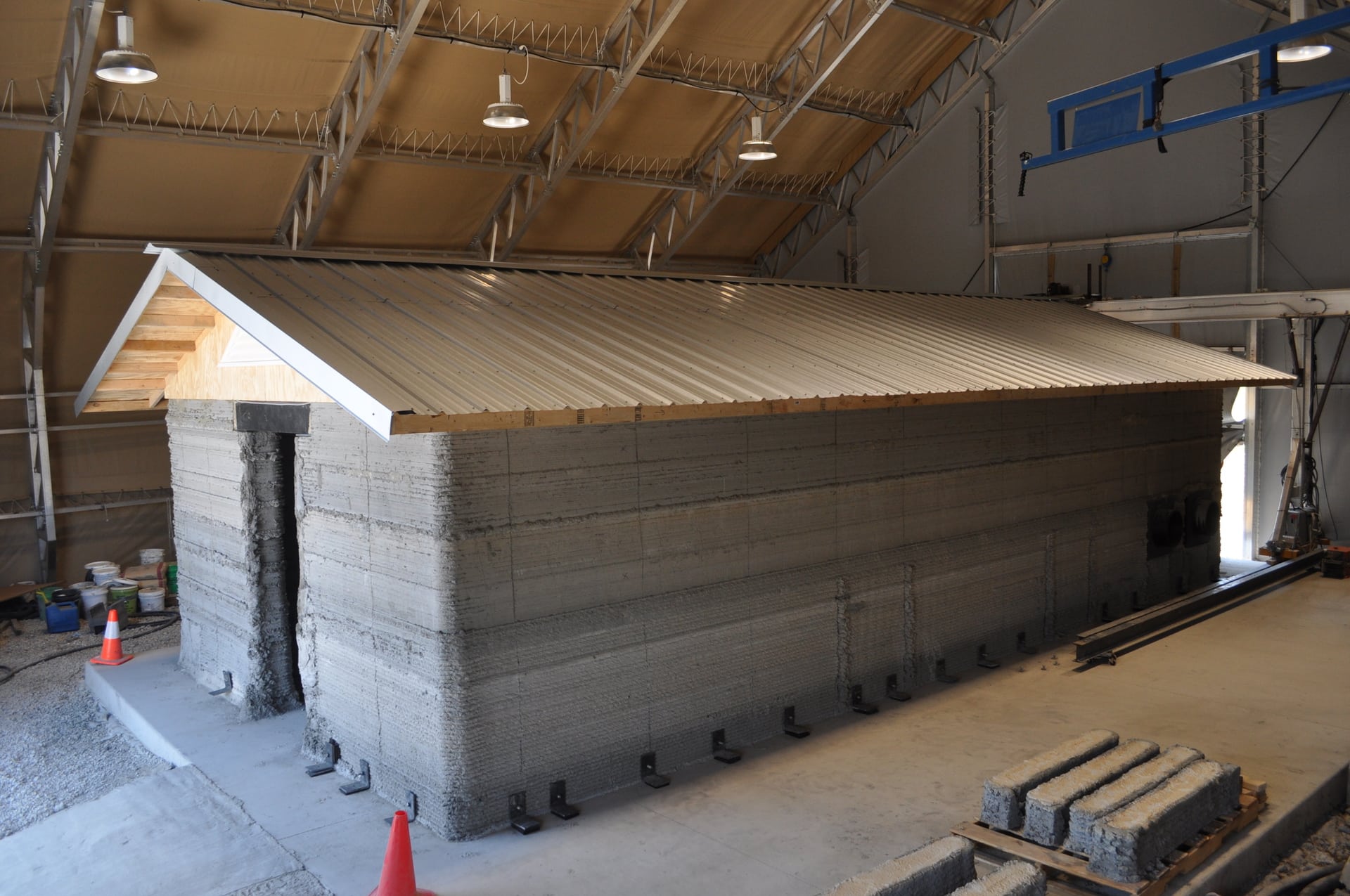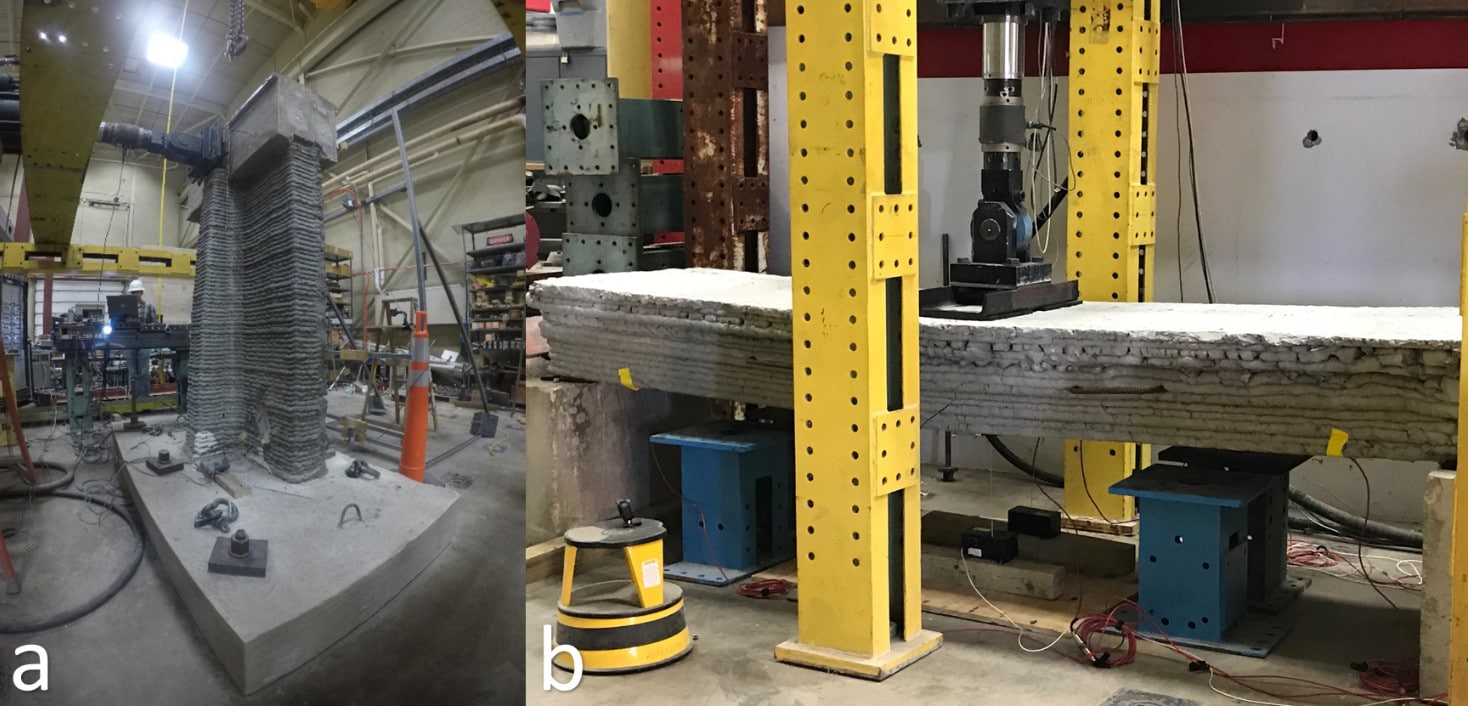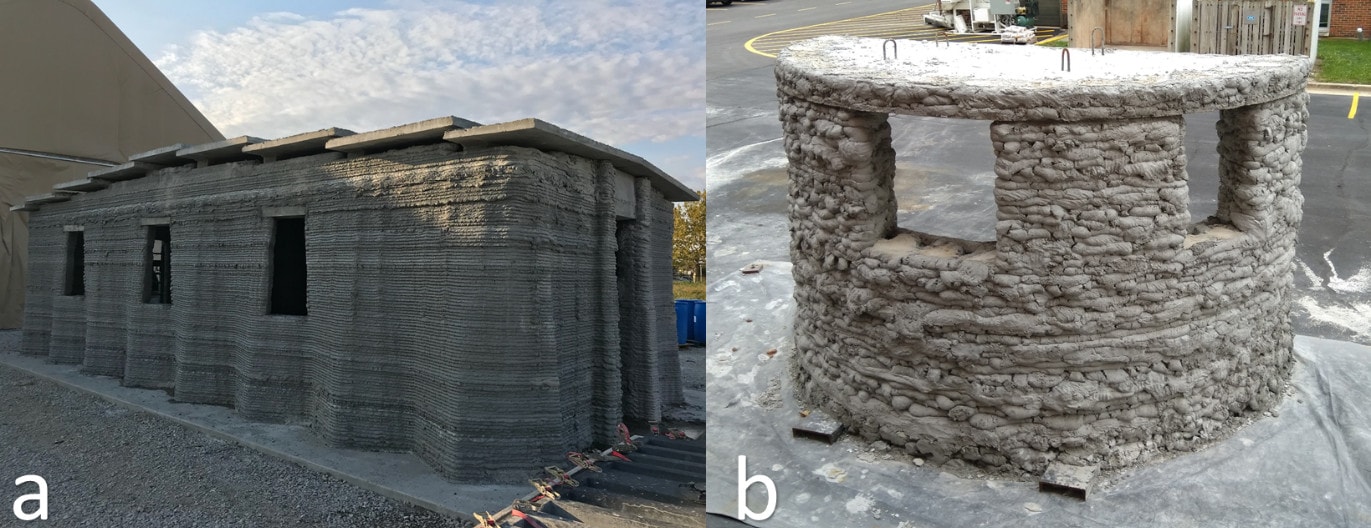By Megan Kreiger, ERDC-CERL, and Eric Kreiger, P.E., ERDC-CERL

A 3D bridge that was printed during a USMC, Navy, ERDC-CERL demonstration. All images courtesy of the Government of the United States.
3D printers.
You’re probably picturing one of two things: desktop machines printing plastic items often located in schools, libraries, or at home, or metal printers that create optimized brackets, automotive parts, or jet engines. However, this technology spans an even greater spectrum, from micro printing biological tissue to the large-scale printing of cars and boats, up to full-size buildings and bridges, referred to as additive construction.
Additive construction (AC) is defined as a construction process where a machine uses a 3D CAD model to produce large scale components used for construction activities by depositing material in successive layers.

A 3D printed building at ERDC-CERL.
The Growth of a Technology
Additive construction (3D printed construction) has rapidly grown over the past six years, from a handful of research institutions to a field of study with a new development or company forming every month. There are numerous organizations around the world that currently have the capability to produce construction scale components and structures, including buildings, bridges, and other civil infrastructure (Table 1). Companies are sprouting up with the hopes of producing civil structures that the public will use and admire for years to come.

a) Structural test of walls, and b) Structural test of beams.
The Benefits of Additive Construction
Using AC for concrete construction has the potential to decrease the cost of construction and decrease task duration. Other benefits include a reduction in hard labor, reduction in logistics, and the ability to create complex geometries with little, if any, additional cost due to the elimination of formwork for concrete construction.
This ability to add complexity in three dimensions out of various materials (concrete, mortar, foam, and plastic) adds another tool to the toolbox for structural engineers and architects, giving them more freedom in design without being limited by cost or constructability, and enhancing aspects including optimization, structural performance, thermal properties, and reducing material usage.
Research by the US Army Engineer Research and Development Center, Construction Engineering Research Center (ERDC-CERL) has focused efforts on design processes, structural validation (Figure 2), material/print quality control, and the integration of additive construction technologies with current construction practices. This includes reinforcement and casting in additively constructed formwork, reinforcing and grouting of reinforced additively constructed concrete (RACC) walls, anchoring, and connection of/to AC structural elements.
Results have shown that reinforced monolithic ACC beams can support loads equivalent to similar size cast reinforced concrete beams (up to 45 kips); RACC walls have equivalent structural strength to CMU walls, but changes in out-of-plane geometry can increase the structural capacity significantly (2.5 times) with little increase in material from a straight printed wall (eight percent).

a) A structurally enhanced building, and b) This function over beauty print opens the door for this technology to be used for the military, disaster relief, and more.
Pushing Past the Hype to What’s Really Possible
The field is currently fixated on print rate and the concept of completing a structure in 24-hours. This is often interpreted as elapsed time (total time to complete the structure), however, most reports are in print time (the total time the printer is running), which leads to an inaccurate perception of the process. This was tested during ERDC-CERL’s print of a structurally enhanced building in August of 2018, where it was shown to be possible to complete a 16’ x 32’ x 9.25’ print in 48-hours (Figure 3a).
ERDC-CERL has developed a process to allow for larger aggregate size with larger bead size and to keep pace with conventional concrete trucks/continuous mixers. This was demonstrated through the print of a fighting position, a first in the world demonstration (Figure 3b). In this process, ERDC-CERL has opted for function over beauty to print with highly mobile, durable, easy to fix equipment, and “hard to print materials” by utilizing raw materials and large aggregate to create structures without need for a cumbersome logistics tail, which opens the door for this technology to be used for the military, disaster relief, civil works, and the general construction industry.
Only a limited number of printed buildings have been approved for occupancy, and only a few printed bridges have been opened. The field currently relies on validation testing, as stated in IBC 104.11 and ACI 318-14, Section 1.10, which has led to some companies developing acceptance criteria that is highly restrictive (example: ICC AC509). As this technology grows, it is necessary for codes, standards, and regulations to be updated to stay ahead of the fast-paced technological development.
For example, the American Concrete Institute (ACI) has established Committee 564: 3D Printing with Cementitious Materials, which will address the concerns of materials, quality control, construction, design, and application. Efforts such as this will ensure the safety of the construction crews, the safety of the public, and that proper design methods are in place.
Endless Possibilities
Additive construction has the potential to change current limitations in construction in conjunction with traditional methods in conventional construction to produce structures that are unique and complex. This technology will root where it makes sense from a design and buildability standpoint to kickstart a change in construction as we know it through a revolution in design freedom for construction.
Additive construction opens the door for contractors, engineers, and architects to design structures in ways that were previously uneconomical while reducing hard labor in the process. If you can dream it, we can build it.
Megan Kreiger, ERDC-CERL, shared her knowledge on this subject at CURT’s National Conference in 2019. If you’d like to learn more highly-valuable industry information like this, register for CURT’s 2020 National Conference, February 10-12. The event is being held at the Sheraton Grand at Wild Horse Pass in Chandler, Arizona.
CURT’S MISSION IS TO CREATE A COMPETITIVE ADVANTAGE FOR CONSTRUCTION USERS. CURT ACCOMPLISHES THIS MULTIFACETED OBJECTIVE BY PROVIDING AGGRESSIVE LEADERSHIP ON THOSE BUSINESS ISSUES THAT PROMOTE EXCELLENCE IN THE CREATION OF CAPITAL ASSETS.
